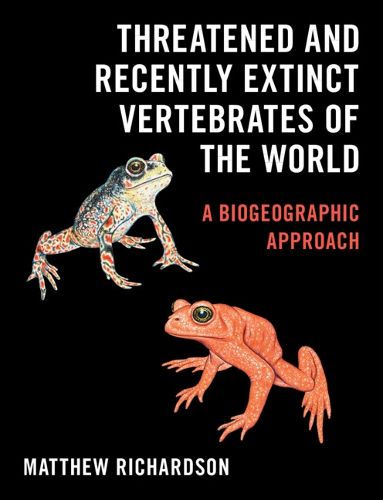Readings Newsletter
Become a Readings Member to make your shopping experience even easier.
Sign in or sign up for free!
You’re not far away from qualifying for FREE standard shipping within Australia
You’ve qualified for FREE standard shipping within Australia
The cart is loading…






Habitat degradation is currently the main anthropogenic cause of species extinctions. The main cause of habitat degradation worldwide is agriculture, with urban sprawl, logging, mining and some fishing practices close behind. The physical destruction of habitat, such as deforestation for land development and burning fossil fuels, are examples of this. This volume provides a comprehensive overview of all threatened and recently-extinct mammals, birds, reptiles, amphibians, and fishes within the context of their locations and habitats. The approach takes a systematic examination of each biogeographic realm and region of the world, both terrestrial and marine, but with a particular emphasis on geographic features such as mountains and islands. It reveals patterns useful in conservation and helps to put it all into perspective. It is a baseline from which to compare subsequent developments, as well as a standardization of the way endangered species are studied.
$9.00 standard shipping within Australia
FREE standard shipping within Australia for orders over $100.00
Express & International shipping calculated at checkout
Stock availability can be subject to change without notice. We recommend calling the shop or contacting our online team to check availability of low stock items. Please see our Shopping Online page for more details.
Habitat degradation is currently the main anthropogenic cause of species extinctions. The main cause of habitat degradation worldwide is agriculture, with urban sprawl, logging, mining and some fishing practices close behind. The physical destruction of habitat, such as deforestation for land development and burning fossil fuels, are examples of this. This volume provides a comprehensive overview of all threatened and recently-extinct mammals, birds, reptiles, amphibians, and fishes within the context of their locations and habitats. The approach takes a systematic examination of each biogeographic realm and region of the world, both terrestrial and marine, but with a particular emphasis on geographic features such as mountains and islands. It reveals patterns useful in conservation and helps to put it all into perspective. It is a baseline from which to compare subsequent developments, as well as a standardization of the way endangered species are studied.